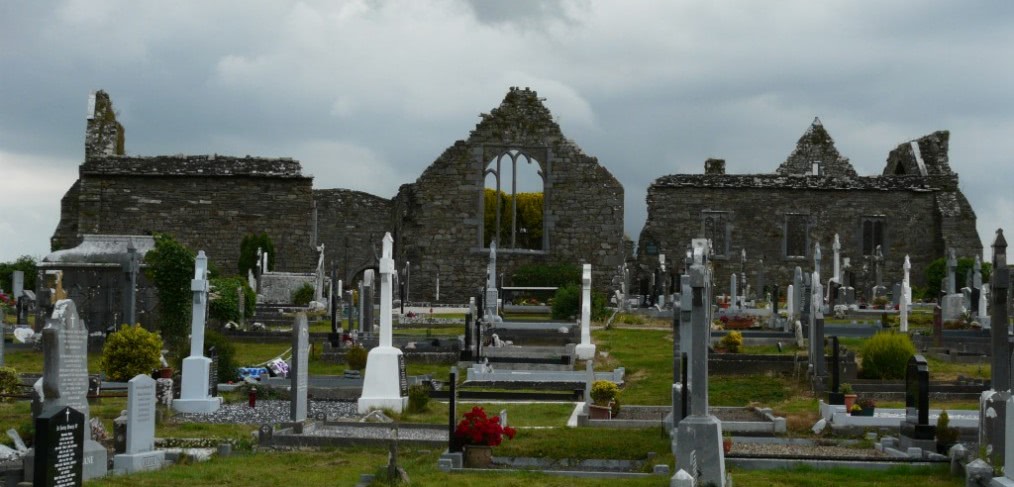
Architecture to Die For
With the Kagan Fellowship around the corner, I’ve started thinking a lot about a subject I have always wanted to explore – the architecture of the dead.
For as long as humans have inhabited the earth, there has been a ceremonial facet to death. In fact, archeologists have discovered 70,000 year old fossilized human remains in rectangular-shaped holes that are believed to be prehistoric graves. As civilizations advanced and began to create elaborate architectural designs, man began its journey in constructing ornate monuments, tombs and cemeteries to honor the dead. From the elaborate tombs of the Valley of the Kings in Egypt to the neoclassical mausoleums of Europe, architecture has always played an important role in establishing a vocabulary for the final chapter of our lives. This leads me to ask, what does the architecture of our burial grounds say about us? Why is it that the design of the U.S. necropolis seems to be architecturally stuck with a style that no longer reflects our society? From funeral homes draped in damask and classical arches to caskets and coffins that look like giant crown moldings, America seems to have resistance towards a new and modern approach to the design of the dead. Why is it that we live in modern cities, drive hybrid cars, interact with one another in ways never before imaginable but when it comes to death, we still follow design traditions of the past?
I am sure we have all wondered at some point in our lives what we would like our final resting place to be like. Would we want to be cremated and remembered in a mausoleum or buried in a serene garden? For me, this question was always left unanswered until I received my copy of Interior Design magazine’s December 2012 issue. There, on page 105, was a stunning two-page spread highlighting the Garden Mausoleum at Minneapolis’ Lakewood cemetery. The architecture was modern and graceful with beautifully curated fenestrations that framed the building’s serene surrounding landscape. The interiors were an exercise in modern restraint, made up of simple forms, rich materials and beautiful stone details. I immediately thought, “This is a place worthy of spending the rest of my life! Even Mies would have liked to be buried here!” What an interesting project. Finally, a modern resting place that doesn’t replicate the past, but instead features a unique design that speaks to our time. While all of this is true, the further I looked the more I realized that the rituals were the same they were just enveloped in a new, more modern package. I was left wondering, why hasn’t the function of these spaces changed, even though the design has?
I took to the internet and started looking for other examples and to be honest there was very little to be found. Among my findings was the beautifully designed Panteón Nube in Spain by Clavel Arquitectos and a family tomb by architect Pedro Dias in Portugal. Each had its own unique style and approach, but overall the functionality of the design was the same. Unlike the tombs of the Valley of the Kings that were designed for the pharaohs journey to the afterlife and were filled their personal riches, these more modern burial grounds are designed for the living. They serve as a place for families and friends to visit their loved one who have passed. It’s obvious that we can never truly enjoy these spaces after death, so who should we design these cemeteries, monuments and tombs for?
Architects and designers have played a major role in redefining the hospitals of the future, hospitals that welcome new human life every minute of every day. Shouldn’t we also take the same initiative with designing spaces for our final resting place?

Nice article! One of the most inspired designs I know is Igualada Cemetery, outside Barcelona. http://www.landezine.com/index.php/2009/08/cemetery-design-igualada/
Very unique perspective on a totally ignored area of design Yohandel! It would be interesting to see how modern understanding of ergonomics – space saving practices – and tecnnology could infer what the modern mourning/burial experience could be become.
As always, your piece, is a piece of art!! Your creativity an excitement always reflects on your work and ideas. Love it!!
Very good article. One of the most fulfilling projects I worked on in an architectrual capacity was a columbarium. It was essentially a small jewel box, with lots of attention to detail and a large budget. The experience raised lots of questions for all involved, and was really one of the more complex and interesting building types. Hopefully the future will bring satisfying solutions and responses to the many complex issues encompassed in this process.
who doesn’t want his place to be best in the world. An architect puts all the innovative and imaginative ideas in making an architecture beautiful. It’s a very innovative idea to design a funeral place. these pics are amazing!!! nice thought, nice article.